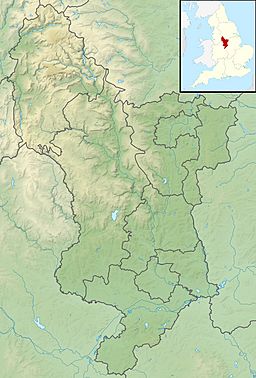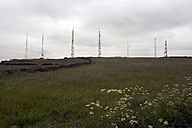Alport Height facts for kids
Quick facts for kids Alport Height |
|
|---|---|

The Alport Stone, just below the summit of Alport Height
|
|
| Highest point | |
| Elevation | 314 m (1,030 ft) |
| Geography | |
| OS grid | SK305515 |
| Topo map | OS Landranger 119 |
Alport Height is a popular hill found near Wirksworth in Derbyshire, England. It's a fantastic spot for picnics because it offers amazing views, especially towards the south. This hill is special because it's one of the first places over 300 meters (about 1,000 feet) that's easy to get to from the Derby area.
Like Shining Cliff Woods, which is just 2 kilometers (about 1.2 miles) to the east, Alport Height is looked after by the National Trust. The National Trust is a charity that protects important places. They took care of Alport Height starting in 1930, making it one of their first protected sites in Derbyshire.
Amazing Views from the Top
From the very top of Alport Height, you can see incredibly far! You might even spot the city center of Derby. On a clear day, you can see other famous hills like The Wrekin, the Long Mynd, and the Clee Hill.
You can also see tall radio masts in the distance, such as those at Sutton Coldfield and Lichfield. The skyline of Birmingham city center is visible too, along with the Lickey Hills just beyond Birmingham. Even the Pye Green BT Tower on Cannock Chase can be seen from here.
Radio Masts at the Summit
Right at the top of Alport Height, there's a special area with eight radio masts and their buildings. These masts are used for sending out radio signals. This part of the summit is not owned by the National Trust.
The Famous Alport Stone
The hill is sometimes called Alport Stone because of a very noticeable rock near its top. This rock is a tall pillar of gritstone, which is a type of rock. It stands about 6 meters (20 feet) high.
The Alport Stone is famous among climbers. It has about 3 or 4 known climbing paths up its sides. One of these routes is about 8 meters (26 feet) long and is considered very challenging for climbers. Early photos of brave climbers tackling the Stone can be found on the bouldering website of John Gill, a pioneer in the sport.



